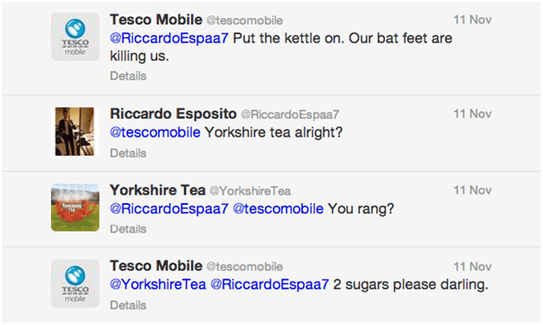Editor’s note: Today’s post comes to us courtesy of Josh Haynam, the co-founder of Interact, a fast-growing platform for creating responsive quizzes that help you generate engagement and capture leads. Follow Josh on Twitter @jhaynam.
Take a look at the following three names:
- Nikola Tesla
- Joseph Swan
- Thomas Edison
Who discovered electricity? Who invented the electric light bulb?
(No Googling or Binging, please.)
If you answered Thomas Edison, you’re wrong on both counts.
So why is that guy so famous?
As you may have guessed, Thomas Edison was spooky smart as an inventor and business man. But his most unique talent may have been a keen ability to market himself – to successfully associate his name with a litany of breakthroughs that changed the game.
Breakthroughs that he, Edison, did not invent.
And yet his name is the one that remains top of mind a century later.
The point: Leveraging ideas that are known-good (i.e., that others have experimented with and worked out the beta versions) can be an excellent strategy for keeping pace with the enormous volumes of content that marketers are on tap to generate.
I’m not suggesting feeding your content marketing needs with plagiarism or theft. Rather, I’m suggesting that marketers take advantage of what’s already been discovered and tested:online tools that can save time and effort, allowing you to focus on letting your uniqueness shine.
Here’s how to do it.
5 Time-Savers to Tap
1. Use proven methods for writing: Sites like Upworthy have created entire businesses around the art of clever writing, and they’re happy to share. One of its resources illustrates an exercise wherein you pick a tagline and then write 25 versions of it. Rewriting so many times will let your creativity fly and your true voice emerge.
2. Don’t make your own graphics: Fumbling with Photoshop or waiting on the creative department to send over an image for your blog post or social media update can throw off the schedule. Creative Commons is a great source for finding free or inexpensive images that are semantically curated across sites including Google images, Flickr, and Fotopedia. Other sites such as Graphic River offer very low-cost images and can save a load of time.
3. Let others experiment on content ideas: With limited time and money, you don’t want to be exploring content topics and avenues aimlessly. Take what works and perfect it. To get started, here are 72 content ideas that are proven to work.
4. Curate: Viral Nova is a testament to the fact that originality is not as important as we think. The site has never created an original piece, and still receives more than 100 million unique visits every month. Jay Baer from Convince and Convert produced a great talk on curating, using 6,000 pieces of content as examples.
5. Use guest authors: The recent controversy around guest blogging doesn’t mean you shouldn’t invite great writers to contribute to your site. When done with the reader in mind, guest blogging is a great way to diversify your content and give prospective and current customers some diversity in your messaging.
As an example, KISSmetrics uses many guest authors and has effectively built its blog to over 400,000 visits each month. They follow seven strict rules for choosing guest authors, which can be summarized as follows: Do your research on the author, be picky, and take pride in all the content you showcase.
3 Corners NOT to Cut:
1. Your Voice: Among the most successful companies, regardless of industry or size, brand voice – i.e., brand personality – is their strongest customer-retention tool. Don’t sacrifice this. Make sure your brand’s voice is consistent across every piece of content, from eBooks and articles to videos and social media shares.
Tesco Mobile is an example. Starting with an angry tweet from a customer who had a bad experience, Tesco embarked on a lengthy conversation that allowed their voice to shine. The good-natured chat involved a cross-section of customers and other brands, ultimately reversing the tense situation and, presumably, keeping a good customer.
2. Your Expertise: Don’t sacrifice your core areas of knowledge. If you run an email marketing service, create original, insightful, and in-depth content about email marketing that offers a unique spin based on your particular experiences and viewpoints. This is a good way to build trust with your readers.
3. Your Involvement: Social media takes a lot of time. But before you hand over the reins to a person or an automated scheduling tool, think it through carefully. Does the delegate know your brand voice? Is that Tweet scheduler effective? Do these tactics pose a risk to your brand reputation? If you don’t care who’s reading your work as long as it generates leads … you may not be generating leads for long. Staying involved and accessible strengthens both your personal and your business brand.
A great example of staying involved comes from Sainsbury’s, the UK’s largest grocery outlet. A six-year-old girl purchased a loaf of “Tiger Bread” and was perplexed because the loaf looked nothing like a tiger but more like a giraffe. She emailed Sainsbury’s. The email made its way through the ranks, and an executive renamed the bread “Giraffe Bread.” The incident became an instant hit, precisely because the executive stayed personally involved.
Market like Thomas Edison
Great content marketing doesn’t have to be wholly original. It can be crafted smartly – and yes, uniquely – by making use of what’s already been done, and then building on it to make something new.
Every day 27 million new pieces of content are produced; you can’t afford to waste time recreating what others have already done and perfected.
And one more thing: neither Swan, Tesla, nor Edison invented electricity (nor were they the first to discover it), although Joseph Swan DID invent the electric light bulb. But you knew that, right?
What do you think? Have you had success with campaigns that built on others’ original works?
“Lightbulb” by Julia Bickerstaff, used by permission under a Creative Commons 2.0 license.

